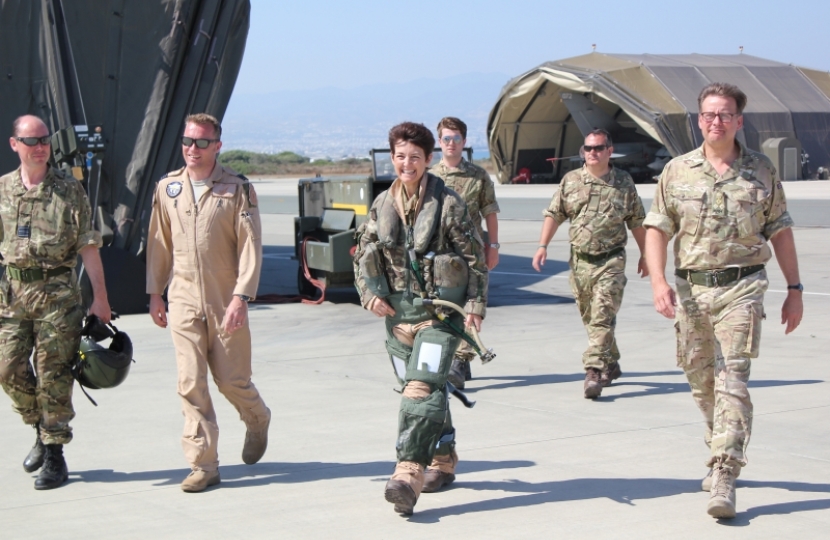
Reflecting on my time in Parliament since May, one topic that has and will continue to dominate the agenda is defence; highlighted by the agreed air strikes in Syria and a vote on Trident due later this year. Having recently visited our own RAF Honington, attentions are now turning towards the future of our security particularly since the release of the Strategic Defence and Security Review (SDSR) looking at the next decade of our defences.
The UK defence sector is a direct employer of 102,000 staff and is currently the fifth largest defence budget in the world at around £34 billion and the second largest NATO expenditure. However, until recently the state of defence particularly equipment and procurement has been described in an expert review as "in an impossible mess", highlighting a reactive, expensive and largely obsolete model.
With everyone being encouraged to tighten their belts, what concerns me is the resourcing of our forces. Defence procurement currently accounts for around 36% of the total spend and has a direct impact on the effectiveness of our forces in the field.
Our defence sector has the capability to deliver state of the art equipment, but without a vital reorganisation of procurement contracts and funding priority, we face delivering our forces with the wrong equipment, late and over budget.
The latest SDSR has outlined the future of procurement, promising £178 billion over the next decade for frontline service equipment and has committed itself to "innovation" and "simplification" of the procurement process. Whilst the results of this are yet to be detailed in full, any changes to our defence procurement must meet the ever more complex nature of our combat; a thought prompted by my visit to RAF Honington.
In visiting the base, I was struck by just how specialised the services being provided, were, such as contingency operations, advanced weapons advice, groundwork training and future medical support services. When you consider the defence challenges we face, modern threats are moving towards covert and tactical efforts, requiring an entirely new combative strategy, for instance, to address cyber-propaganda and the recruitment of groups such as Daesh.
Yet, from my business perspective whilst a minimum of 2.9% of spending has been invested in research and development, wholesale innovation and a cultural overhaul may become essential for defence procurement to remain relevant and affordable. From the factories to feet on the ground, we need to support both our industry and military personnel, in order to build a long-term strategy to address new and enduring threats. This is something I will be mindful of as the future plans of the SDSR become a reality.
Published in the Bury Free Press